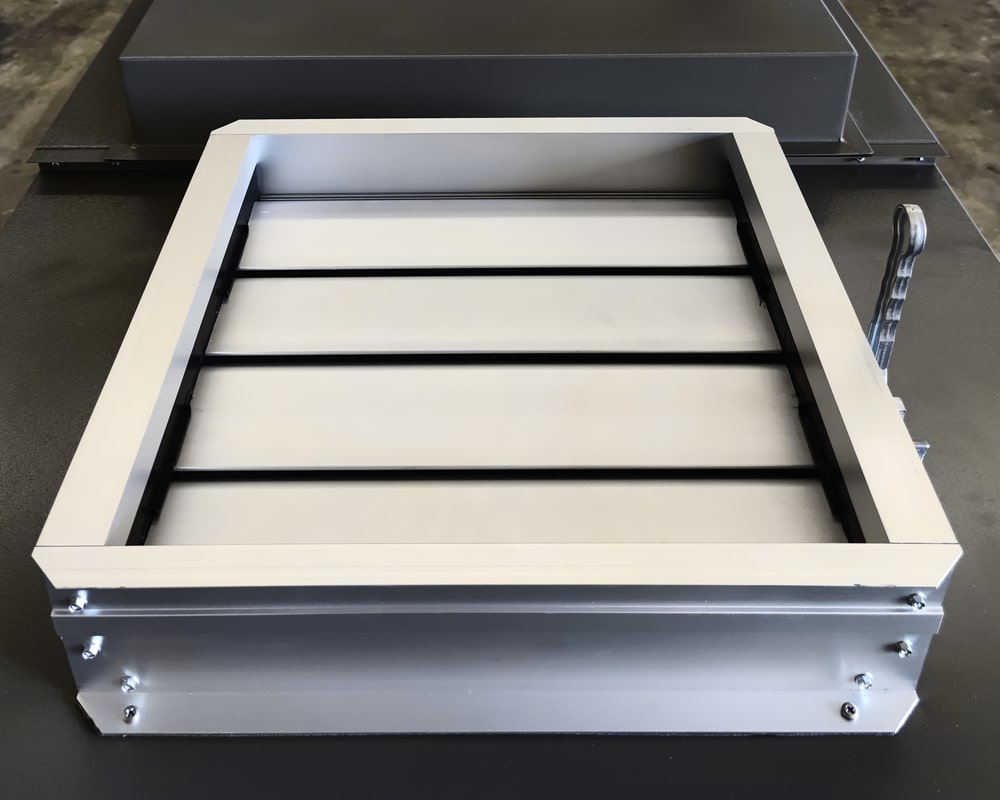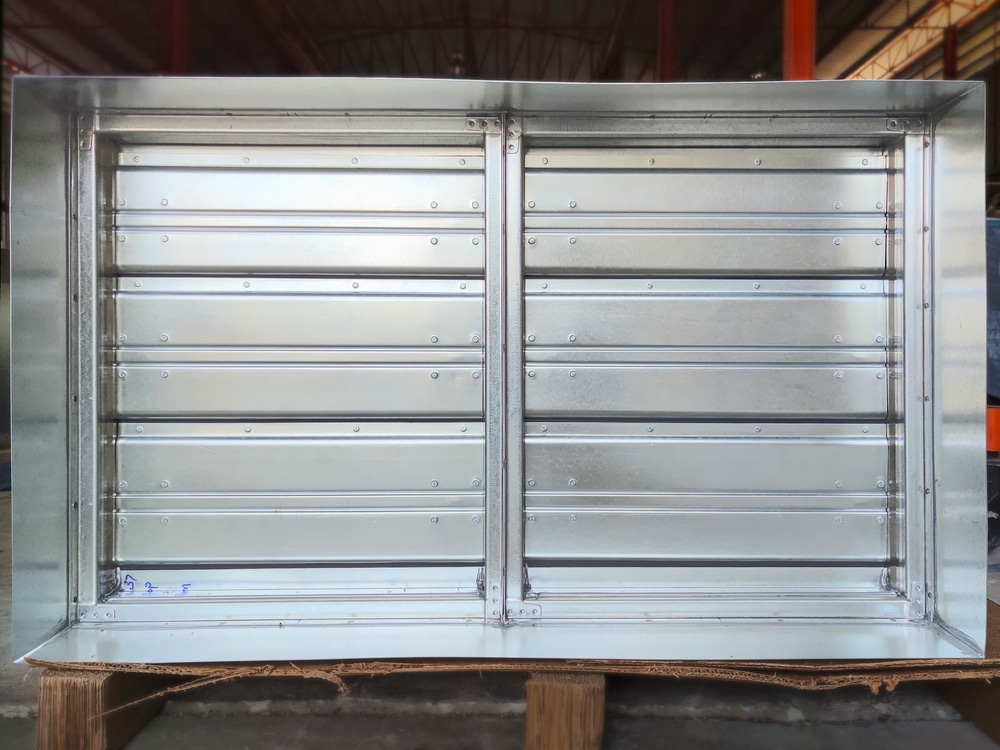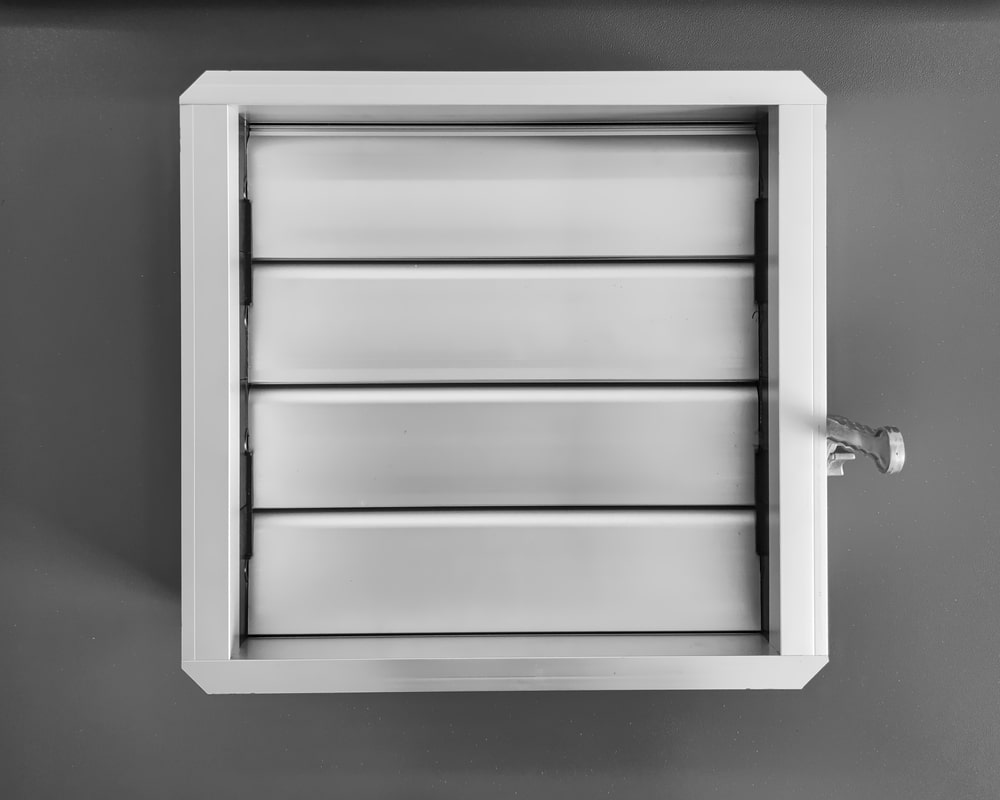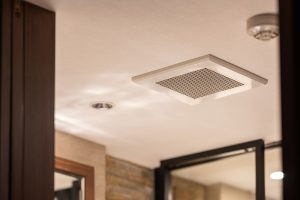Everything You Need to Know About Fire Damper Testing
Fire dampers are a crucial component of every kind of mechanical ventilation. Its inclusion in modern ventilation units is the difference in potentially saving lives. So it’s not a surprise that fire dampers must be tested to ensure they are working.
In this blog, we will tell you everything you need to know about fire damper testing.
With new buildings being made to be as energy efficient as possible, and the UK aiming for 95% of its electricity usage to be low carbon by 2030, it is imperative to understand how we can make the most of our ventilation. This is where applications such as extractor fans and heat recovery ventilation units come in.
To prevent mould, fresh air should constantly be introduced into your dwelling daily, as it helps to regulate temperature and reduce condensation. Introducing fresh air can be as simple as having a ventilation routine, or installing extractors or MVHR units. Almost all of this is facilitated by ducting.
What is a fire damper?
Fire dampers are crucial components of a building’s passive fire protection system. They are essentially automatic valves installed within ventilation ducts that close in the event of a fire. This closure helps contain the spread of flames, smoke, and heat, giving occupants precious time to evacuate and preventing the fire from reaching other parts of the building.
Their effectiveness is due to the fact that it cuts off the oxygen required for a fire to spread quickly. So it becomes easy to understand why this component must be tested.
Why is Fire Damper Testing Important?
- Life Safety: Properly functioning fire dampers can save lives by compartmentalizing a fire, preventing its spread, and allowing safe evacuation.
- Regulatory Requirement: The Regulatory Reform (Fire Safety) Order 2005 mandates the “responsible person” for a building to ensure the safety of everyone in the building. This includes maintaining fire safety measures like fire dampers through regular testing.
- Building Insurance: Most building insurance policies require evidence of regular fire damper testing to remain valid.
What happens if a fire damper isn’t working?
In the event of a fire, if a fire damper doesn’t work, flames can spread through the ducting and ventilation units, causing the fire to spread exponentially within areas the ducting is in. This leads to the fire causing much more destruction, and becoming immensely harder to remove.
Everything you need to know about fire damper testing

Fire damper testing typically involves two stages:
- Visual Inspection: A qualified fire damper inspector will visually check each fire damper for:
- Physical damage: Dents, corrosion, or any signs of misalignment.
- Obstructions: Any objects blocking the damper’s movement.
- Clearance: Adequate space around the damper for proper operation.
- Labelling: Proper identification and certification information on the damper.
2. Operational Testing: The inspector will then test the functionality of each damper:
- Automatic Closing: Verify that the damper closes automatically when exposed to heat (usually simulated with a special tool) or when the fire alarm system is activated.
- Manual Closing: Ensure the damper can also be closed manually using a designated lever or switch.
- Movement: Confirm smooth and unrestricted movement of the damper during closure.
How Often Should Fire Dampers Be Tested?
The recommended frequency of fire damper testing in the UK depends on the type of building and its occupancy:
- Low-risk buildings: Typically annually.
- High-risk buildings: May require more frequent testing, every six months or even quarterly, depending on the specific risk factors. For example, electronics stores, or stores that sell other products that have a greater fire risk, would require more frequent testing.
Can anyone conduct fire damper testing?
Fire damper testing should only be carried out by a qualified and competent person. This could be:
- A qualified fire damper inspector certified by a third-party accreditation body.
- A competent person employed by a fire safety company with relevant experience and training in fire damper testing.
Following the inspection and testing, the inspector will provide a detailed report that includes:
- Details of each fire damper inspected.
- Findings of the inspection and testing.
- Any identified faults or defects.
- Recommendations for remedial actions, if necessary.
Do fire dampers contribute to ventilation?
No. They are an automatic safety feature that stops ventilation. By stopping ventilation, it helps to mitigate the spread of a fire. Fire dampers should not be active in any other instance other than if it is being tested, or if there is a fire. If they activate outside these circumstances, they are likely to be faulty.
How do you know if a fire damper isn’t working?
Ideally, you’d want to know if your fire damper isn’t working before a fire occurs. A simple way to tell is if the system providing ventilation isn’t providing any at all, even if the system is on.
In the case of a fire, you would realise your fire damper is faulty if the flames are visible through the ventilation outside. In some cases, you may literally be able to see flames coming out from vents.
Are there legal consequences for not having fire dampers?
Yes, there can be punishments for not having fire dampers in the UK, or for having them but not maintaining them properly. Here’s how it can play out:
- Enforcement Action: The most likely consequence would be enforcement action from the local fire authority. They have the power to issue an enforcement notice requiring the building owner to install fire dampers or fix any deficiencies in existing ones.
- Fines: If the enforcement notice is ignored, the fire authority can impose fines. The amount can vary depending on the severity of the offence and the size of the building.
- Prosecution: In serious cases, the responsible person (usually the building owner) could face prosecution under the Regulatory Reform (Fire Safety) Order 2005. This could result in a significant fine or even imprisonment.
- Building Insurance: As mentioned earlier, most building insurance policies require evidence of regular fire damper testing to remain valid. Not having fire dampers or failing to maintain them could invalidate your insurance, leaving you financially liable for any fire damage.
Where can I buy ventilation with fire dampers?

I-Sells is a leading supplier of all things ventilation, this includes extractor fans, roof fans, and much more. Our range covers affordable options, to modestly priced options and the premium options. Each of which have their own features that make them applicable to most if not all homes.
All of our ventilation units will have the necessary and required safety elements within them, including fire dampers. If you would like information on how to get your fire dampers tested, contact us.
Additionally, if you are struggling to decide which ventilation option works for you, we would be happy to assist you in your decision-making, simply contact us with your query, and we will provide the best possible guidance.
Purchase a ventilation system today

At I-Sells, all things ventilation and ducting related is our speciality, we are here to answer the questions we know are common for those new to HVAC and what it encompasses.
We at I-Sells endeavour to ensure our customers have all the information they require before investing in our mould solutions. Be sure to visit our blog page to learn about the vast array of factors and issues surrounding ventilation, mould, condensation, and much more.
Within this blog, we hope to have shown you everything you need to know about fire damper testing. Whilst providing you with supplementary information to help you going forward.
We understand you may have more questions, do not hesitate to contact us for more information about whatever you need our help with. If you’d like to email us, click here. For other contact options, see below:
Call us on 020 8463 9696
Visit us at our showroom:
*OPENING TIMES*
Monday – Friday: 8:00 am to 5:30 pm
Saturday: 9:00 am to 12:00 pm
Sunday: Closed
15 St John’s Parade
Sidcup, Kent
DA14 6ES
United Kingdom




























Add comment
You must be logged in to post a comment.